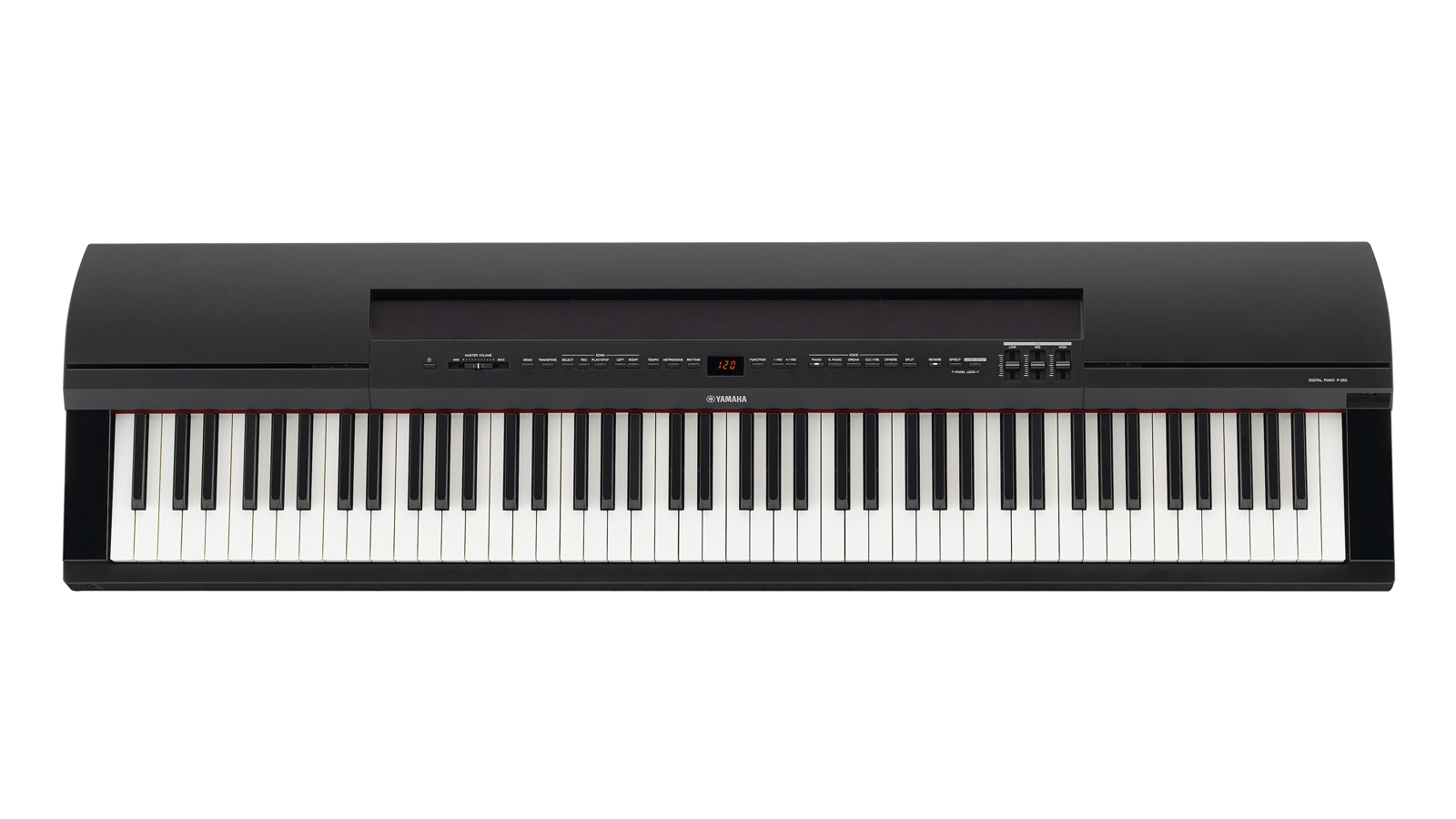MusicRadar Verdict
The P-125a was already a great instrument - a fantastic piano sound coupled with a brilliant keyboard in a lightweight, portable package, whose only Achilles heel was the bizarre removal of its USB audio capability. The P-225 not only addresses this issue, but builds on the P-125a's near-legendary status and impressive attributes with a new main piano sound, a weighted action that’s more compact without sacrificing playability, and a more modern look.
Pros
- +
Yamaha CFX sound engine
- +
New Graded Hammer Compact keyboard action
- +
Restored USB audio function
- +
More compact design
- +
Bluetooth audio streaming
Cons
- -
More expensive than its predecessor
- -
Connectors are hard to reach
MusicRadar's got your back
Yamaha P-225 review: What is it?
With iconic instruments such as the P-45 and P-125a, Yamaha’s P series of portable digital pianos has been the byword for great-sounding, affordable portable instruments for years now, combining excellent grand piano tones with fantastically playable weighted hammer action keyboards. With the current lineup having recently been refreshed with the P-145 and P-225, we lined up the new P-225 alongside its predecessor, the P-125a, to see if the new kid on the block has what it takes to fill the shoes of what was already a pretty compelling package.
Compared to its predecessor, the most immediately noticeable change is the P-225’s sleeker, more modern case design. It’s more slab-sided, with a less pronounced upward curve from the keyboard to the control panel, which is itself much flatter. There's much more empty space on the panel too, thanks to the redesigned and repositioned speaker arrangement that now fires sound out from the back of the instrument, rather than up and down. A supplementary pair of slim vents located above either end of the keyboard are there to help create an inclusive sound from the player’s perspective.
You can choose to have your P-225 either in the standard matt black or an alternate white version at no extra cost, and it ships with a mains adapter, slot-in music rest and footswitch-style damper pedal. The new L-200 wooden stand and LP-1 three-pedal unit are available as optional extras too.
Much has been made of the fact that the P-225 sports a totally redesigned GHC (Graded Hammer Compact) keyboard mechanism designed to deliver the same weighted keyboard experience as Yamaha's previous GHS standard action in a smaller chassis. When compared to the physical dimensions of the P-125a, there’s really not much in it length-wise, but thanks to that more compact GHC keyboard unit, the P-225 manages to shave off 2.3cm of depth and an impressive 3.7cm in height from the P-125a, shedding 300g of weight into the bargain.
Yamaha P-225 review: Performance & verdict
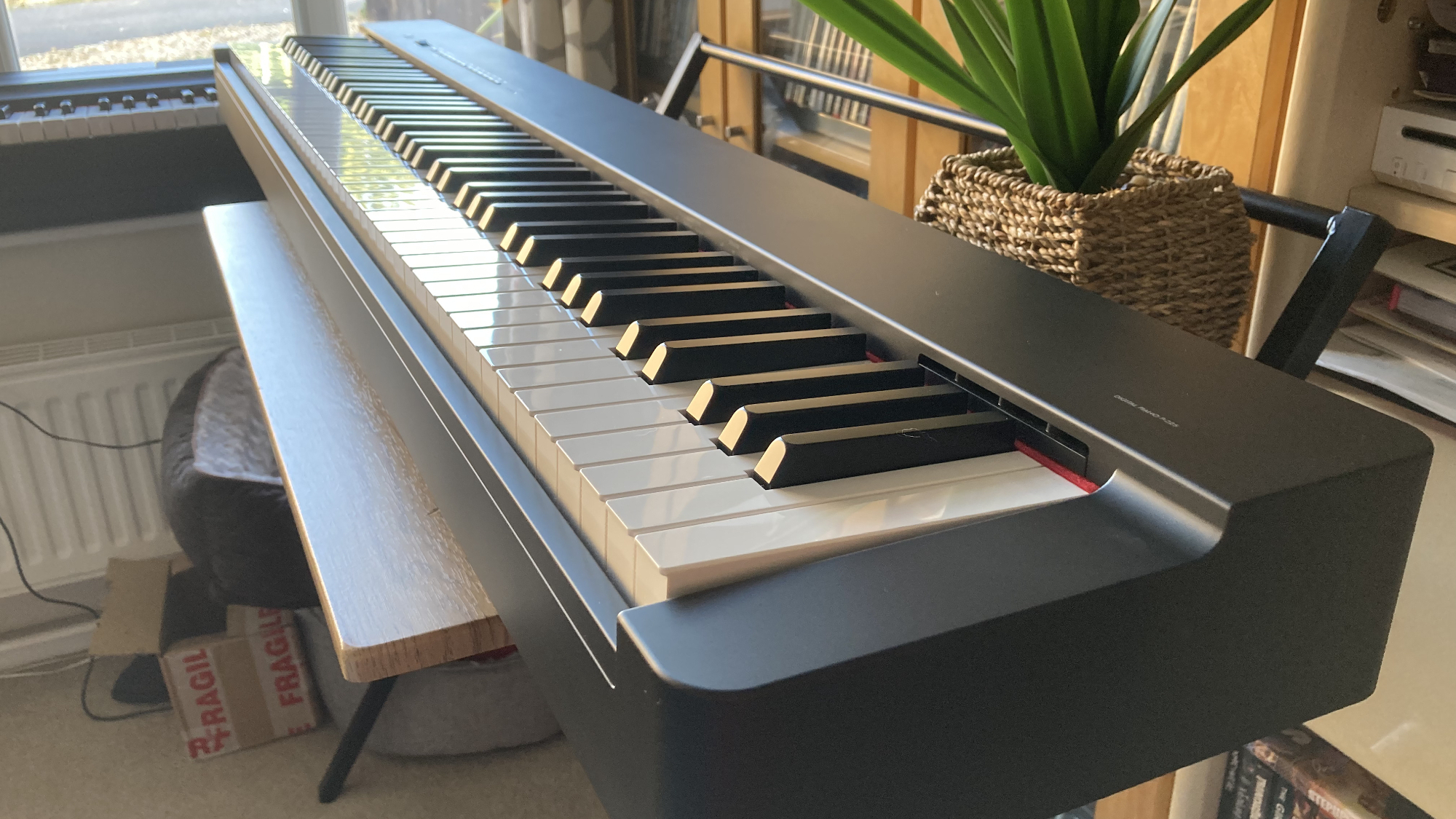
The P-125a’s minimal dashboard layout is preserved here, albeit with redesigned buttons that have a slightly slimmer profile and are illuminated with white LEDs instead of red, contributing to the P-225's ultra-modern look. We still get a horizontal volume slider - which is so much nicer to use than up/down buttons (I’m looking at you, Roland). The rest of the panel layout hasn’t altered that much either, with buttons for function select and metronome, four controls for navigating the demo songs and your own recordings made in the onboard two-track song recorder, and six sound category selection buttons.
All other tasks are performed by the now-familiar combination of holding down the function and metronome buttons and using one of the piano keys as a switch. Not our favourite method, as you have to look up most of these in the manual and there's no visual feedback to confirm the status of the setting you just changed - only a rather disconcerting recorded voice prompt that yells 'on' or 'off' at you.
Still, as a system that works well enough once you get used to where everything lives, it does have the benefits of keeping costs down and preserving the instrument's sleek and elegant aesthetic.
Pressing each of the six sound selection buttons four times cycles through the four sounds located in that category, giving you a total of twenty-four sounds in total, spread across the Piano, E.Piano, Organ, Clav/Vibe, Strings and +Bass categories. As with the P-125a, the +Bass category automatically splits the keyboard, placing one of the four available bass sounds on the left of the keyboard and pairing it with a sound on the right taken from any other category. Polyphony (192 notes), number of tones (24) and speaker output (2 x 7W) all remain unchanged from before.
That’s grand, so it is
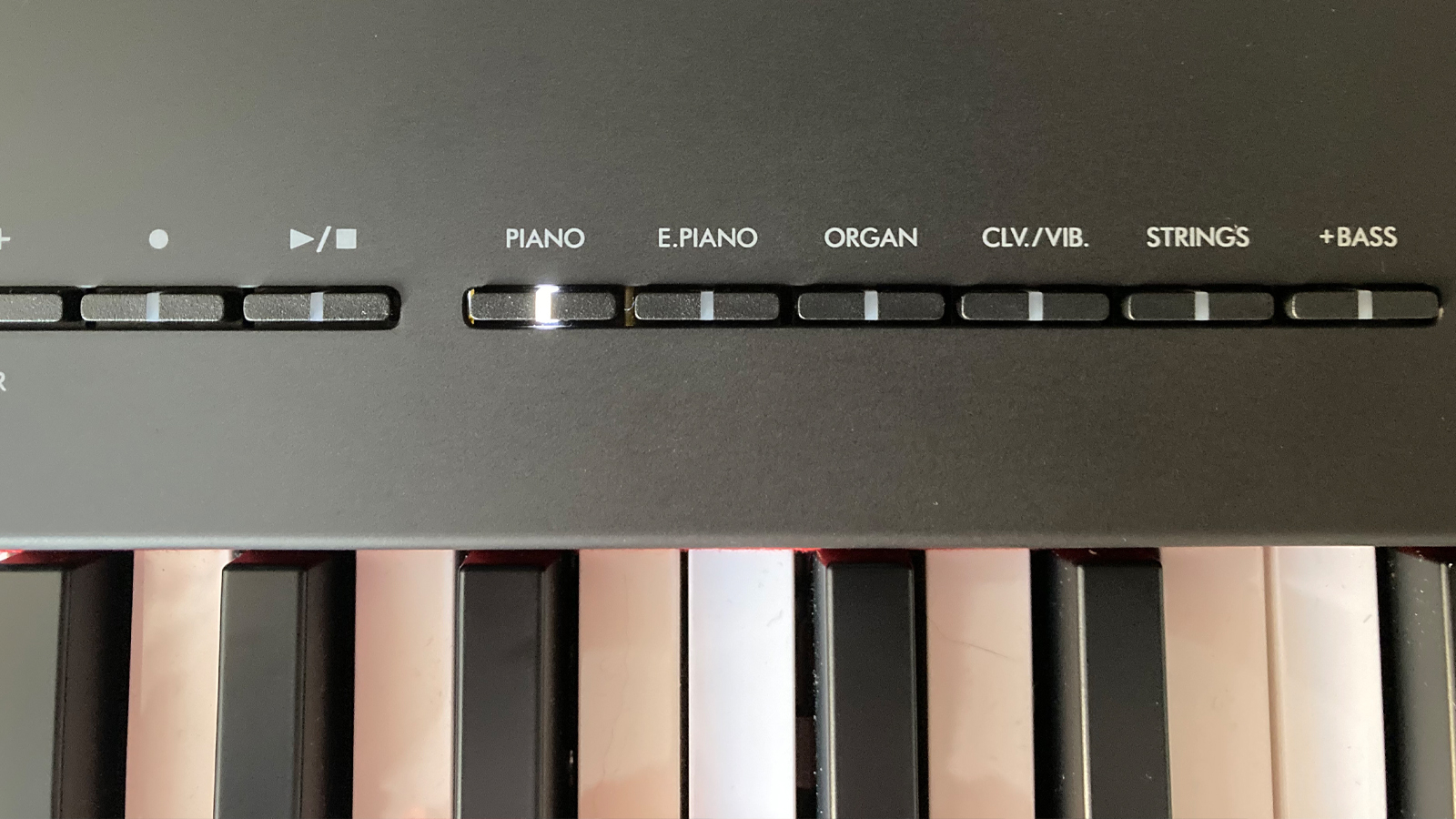
In the interests of science, I set up the P-225 next to a P-125a, to see if the upgraded Yamaha CFX grand piano voice is worth the extra outlay. Directly comparing the two models’ default piano sounds yielded something of a surprise - the CFIIIS-sourced sound on the P-125a I found somehow brighter and grander, while the P-225 had a distinctly more mellow character, with a fuller, richer bottom end and a roundness of tone quite different from the that of the P-125a. Not quite the immediately obvious improvement I was expecting, but a perfectly presentable sound nonetheless.
Cycling through the ancillary sounds on both the old and new models revealed very little difference - the P-225's string patch has a slightly longer release, the presets in the clav and harpsichord categories are in a slightly different order, and there was a discernible difference in the EQ of the speaker arrays making the P-125a sound slightly thinner overall, but otherwise the only major change seems to have been the grand piano sample.
There are the same 20 onboard rhythms to play along to, plus basic auto-accompaniment in the form of a computer-generated bass part that intelligently follows your playing.
Compact and bijou
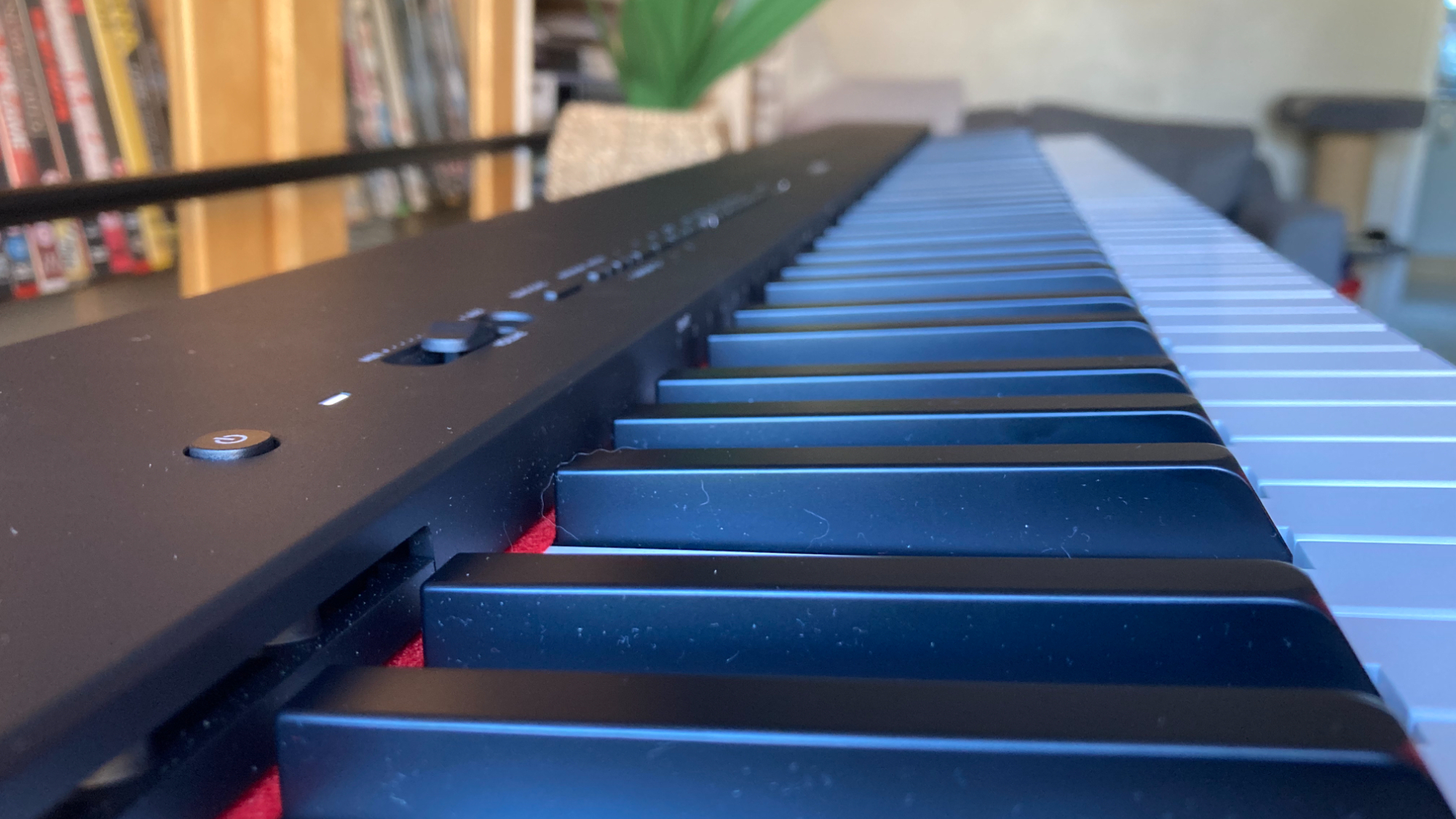
Playability-wise, the GHS keyboard in the P-125a is a tough act to follow. Well-received by all levels of player, to find it in a piano at the P-125a's price point was one of the main reasons why the old model was such an exceptional choice. While the new GHC action that replaces it in P-225 is certainly no backward step, it’s not exactly a huge leap forward either.
If the mission statement behind its inception was to achieve a comparable action to the GHS in a lighter, more compact form, then we’d have to applaud Yamaha for having achieved that target admirably with the GHC. The reduction in physical dimensions has resulted in an action that, while it doesn’t feel exactly the same, is still just as convincing and satisfying to play as its predecessor.
The matte surface of the keys feels great under the fingers, affording plenty of grip without resorting to fake wood-grain texture. The amount of key travel is thankfully unaffected by the reduction in overall height and the graded weighting is spot-on, making scales, repeated notes and fast runs a breeze.
Feature presentation
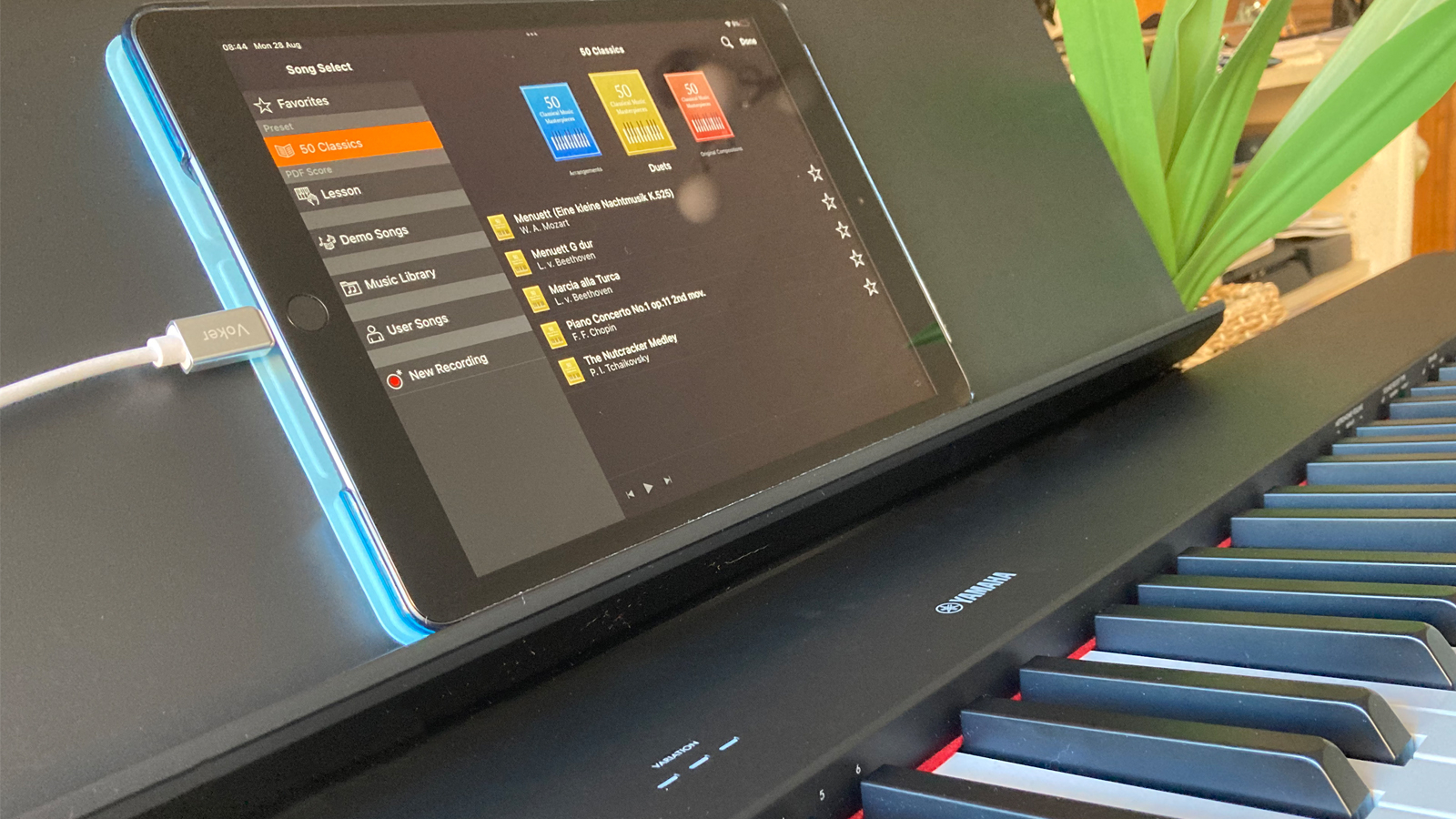

Roland FP-30X: Mid-range stage piano from Roland with SuperNATURAL sound engine, PHA-4 keyboard, 56 sounds and Bluetooth audio and MIDI
Casio PX-S5000: Casio’s ultra-slim portable with Smart Hybrid Hammer Action keyboard matches the P-225 almost spec for spec, except it can be powered by 6 x AA batteries.
Kawai ES-520: Acoustic piano champs Kawai offer this mid-price portable with Responsive Hammer Compact II action, 34 sounds, 100 built-in rhythms and Bluetooth audio and MIDI
Not only does the P-225 benefit from the CFX sample, but it’s also the model at which Yamaha's VRM Lite feature appears in the range. This virtual resonance modelling system is designed to faithfully reproduce the sympathetic resonance you hear between the strings on an acoustic piano when the damper pedal is held down. It works well and sounds very authentic, especially evident when playing random sustained minor 2nds across the width of the keyboard. VRM Lite was previously reserved for Yamaha's premium Clavinova range, so it’s good to see features like this and the CFX sample filtering down to the more affordable end of the product line.
Additional control over the overall sound is afforded by a couple of bonus features. Wall EQ is a preset tone-balancing setting that can be used to optimise the piano sound if you have the P-225 set up with its rearward-facing speakers up against a wall, while the Sound Boost option is a kind of compression effect designed to boost the perceived loudness of low and high-end notes in a noisy environment. Both these features give you a degree of control over the overall sound of the instrument, tailoring it to your setting, but they can’t be adjusted in any great detail.
The other significant improvement in the P-225’s feature set is its USB audio implementation. In a move by Yamaha that had many consumers (and reviewers) scratching their heads in bewilderment, this is a feature that was removed from the P-125 when the model was redesignated the P-125a.
Thankfully, this functionality has been restored in the P-225, allowing you to record your performances as digital audio either to a DAW or to apps like Yamaha's own Rec’n'Share or Smart Pianist. You can also stream audio from a mobile device over Bluetooth to play along with through the P-225's speakers, almost like a big, piano-shaped Bluetooth speaker, bringing it into line with most other beginner digital pianos in this price range.
Unfortunately, the upgrade path hasn’t progressed to the point where the P-225 will use Bluetooth to connect with Yamaha’s excellent, free Smart Pianist app, so you’ll still need a third-party USB cable to hook up to a mobile device. This is well worth doing though, as it transforms your tablet or phone into a large, colourful touch-screen interface for your piano. This makes it much easier to control sound selection, browse the onboard 71-song lesson library and access many other features that can only otherwise be discovered by rummaging through the reference manual to figure out which key they lurk behind.
As far as minus points, they’re really very few and far between. As usual, the string sounds don’t sustain when you hold the damper pedal down, which is something I really wish Yamaha would address in all their digital pianos. You still can’t edit the tremolo speed or depth on the Wurlitzer emulation, and the only other niggle is the overly deep recess where the connection ports live, which is extremely hard to reach with the piano in a set position. Luckily, the dual headphone ports reside happily on the front of the instrument where they can be reached with minimum deployment of your contortionist skills.
Verdict
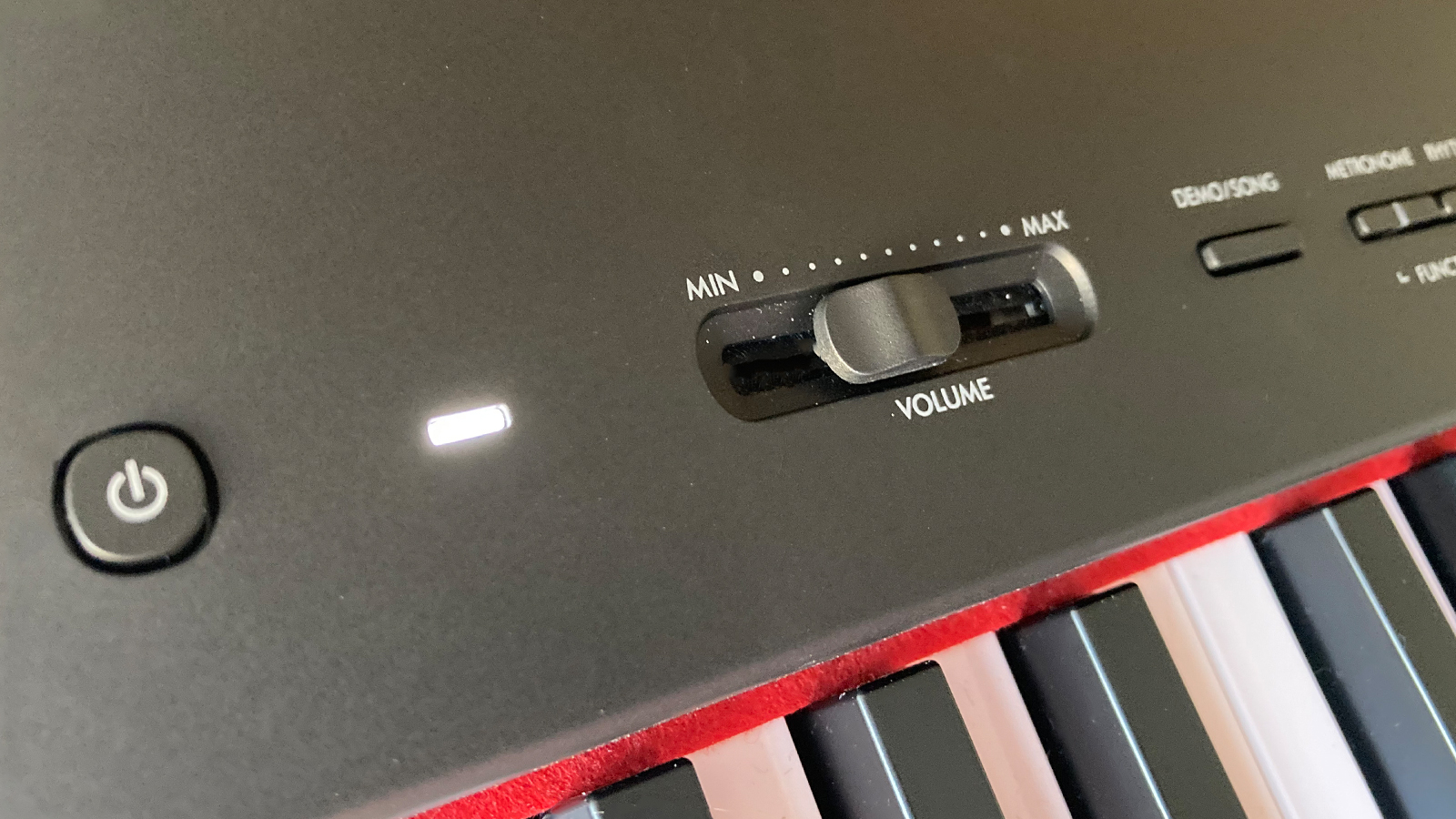
The P-125a was already a great instrument - a fantastic piano sound coupled with a brilliant keyboard in a lightweight, portable package, whose only Achilles heel was the bizarre removal of its USB audio capability.
The P-225 not only addresses this issue, but builds on the P-125a's near-legendary status and impressive attributes with a new main piano sound, a weighted action that’s more compact without sacrificing playability, and a more modern look.
All you need to ask yourself is, is it enough of a leap forward to justify the increase in price? For now, at least, the jury's out on that one.
Yamaha P-225 review: Hands-on demos
Better Music
Gear4Music
Kraft Music
Yamaha P-225 review: Specifications
- Dimensions (W x D x H, mm): 1,326 x 272 x 129
- Weight: 11.5㎏
- Keys: 88 full-size, weighted hammer action GHC (Graded Hammer Compact) keyboard, matte finish on black keys
- Polyphony: 192
- Number of Tones: 24
- Speakers: 2 x 7W
- Power Supply: 12V DC
- Connectivity: 2 x 6.3mm headphones jack, 2 x 3.5mm stereo aux output, USB to Host, Sustain pedal input, pedal unit connector
- Contact: Yamaha
Dave has been making music with computers since 1988 and his engineering, programming and keyboard-playing has featured on recordings by artists including George Michael, Kylie and Gary Barlow. A music technology writer since 2007, he’s Computer Music’s long-serving songwriting and music theory columnist, iCreate magazine’s resident Logic Pro expert and a regular contributor to MusicRadar and Attack Magazine. He also lectures on synthesis at Leeds Conservatoire of Music and is the author of Avid Pro Tools Basics.
"This $399 item will incur over $578 in additional import charges": Price of Sonicware CyDrums drum machine more than doubles thanks to Trump tariffs
“For guitarists who crave an unrelenting, aggressive tone that stands out in any mix”: The Fortin Meshuggah head is the amp every metal player wants – now you can get its crushing tones in a pedal
“At least you know I sing live”: Lady Gaga apologises to fans as she falls victim to a mic malfunction during her second weekend set at Coachella
